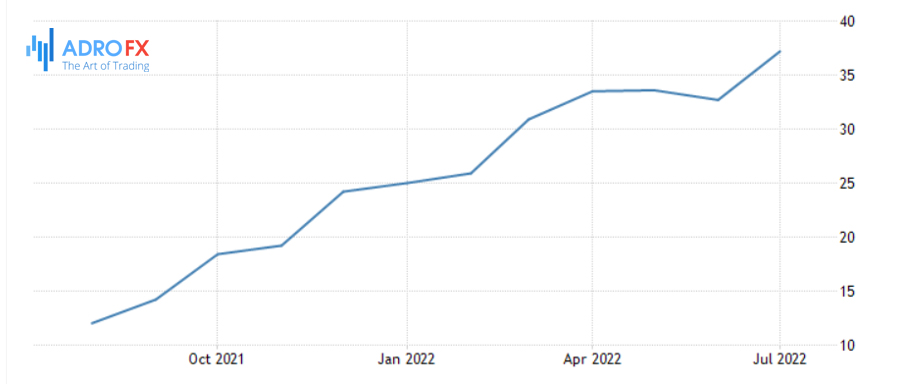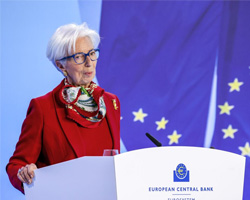You Have No Idea How Bad Europe’s Crisis Is | Daily Market Analysis

Key events:
US - Initial Jobless Claims
US - Philadelphia Fed Manufacturing Index (Sep)
UK - Retail Sales (MoM) (Aug)
Let's start with the basic scenario of the crisis development, which now seems the most probable. The baseline scenario assumes that the EU accepts the oil embargo on supplies from Russia and reduces the consumption of Russian pipeline gas to the maximum. Supplies of coal from Russia fell under EU ban back in August. That is a stable shortage of energy resources in the EU and as a consequence, high energy and electricity prices.
As for the ECB monetary policy and its ability to cope with high inflation. Most likely, the ECB will continue to be cautious with tightening monetary policy, raising the rate very slowly. The latest rate hike of 75 bps at once looks like a bold decision if two important factors are not taken into account. Namely, the much higher interest rate in the US (with the possibility of further aggressive hikes) and double-digit consumer inflation in a number of eurozone countries. The ECB remains hostage to the debt market in southern Europe. At the same time the situation with industrial inflation looks simply catastrophic. In the leading eurozone economy, Germany, industrial inflation has reached 37.2%.

Germany Producer Prices Change
Thus, the baseline scenario assumes a combination of two key factors, the impact of which will have a lasting devastating effect on the EU economy: high inflation and acute energy shortages.
The continuation of the current energy policy will inevitably provoke a process of transferring all energy-intensive production from the EU and will hit hard the industries where oil and gas are used as raw materials. Some companies in this sphere will simply go bankrupt, while others will have to reduce production because their costs are too high. The debt burden on companies in the energy sector is also unavoidable. And high electricity prices will affect almost all spheres of the economy, where there is at least some significant share of energy costs in production. In other words, practically all EU industry will lose competitiveness to a greater or lesser degree. The chemical industry and metallurgy will suffer the greatest blow - we should not rule out a collapse of production there. All related industries, among which agricultural producers are worth mentioning, will also suffer significant damage. Gas is the most important raw material component in the production of mineral fertilizers, and most of the greenhouses in Europe are heated by gas.

EUR/USD remains pressured towards 0.9950 on USD strength
There is every reason to believe that stagflation awaits the Eurozone in the near future. Under such a scenario, the euro exchange rate against the U.S. dollar is likely to fall by 15-20% below parity in the next six months. It makes no sense to talk about any economic growth in the EU over the next year. The question is how much eurozone GDP will fall next year. Especially when adjusted for inflation.
However, there are a number of risks for the Eurozone economy, the consequences of which are not considered by the markets at the moment. Yes, these risks are not included in the baseline scenario, but in the current environment the probability of some events is far from zero. Let us now consider these risks.
The risk of uncontrolled inflation. At some point, the population may lose confidence in the authorities' ability to curb prices. Then we may have a "Turkish" scenario in the EU with inflation rising to absolutely inconceivable values of tens of percent. The only difference is that Turkey does not want to raise the rate, while Europe does not. To some extent this risk can already be seen, as evidenced by the capital outflow from the Eurozone. The rate of euro against the dollar is dropping for this reason as well. This process may accelerate at any time, as soon as investors realize that inflation is becoming uncontrollable.
The likelihood of an acute phase of energy shortages this winter. Despite the fact that European UGS is currently at 84% capacity, this does not guarantee a successful heating season. Especially if the winter is cold. It is worth bearing in mind that the main flow of pipeline gas to the EU now goes through Ukraine. This means that there is no certainty that gas supplies via this route are stable. In such a (deficit) scenario, there is a high risk that a significant part of industry in the EU will be forced to shut down. This is a guaranteed decline in production and an increase in unemployment.
Political risks should not be discounted either. High inflation, rising utility rates and other difficulties that the EU population will soon face could provoke social unrest. This in turn could lead to a change of government in some European countries and exacerbate the political crisis within the EU. A second wave of refugees from Ukraine could also contribute to this if the theater of hostilities spreads to the currently relatively calm regions of the country. It will be especially difficult if the explosive growth of the flow of Ukrainian refugees happens in winter: not only will people have to be fed, but also the rooms where they will be housed will have to be heated.
Further degradation of trade and economic relations between the EU and China. Formally, there is no reason to say that Europe's trade relations with China may soon collapse. Nevertheless, if relations between Washington and Beijing deteriorate sharply, which cannot be ruled out, the EU could be dragged into another sanctions war. PRC-EU relations have steadily deteriorated as European and U.S. policies in Asia have gradually converged. The PRC, in turn, is moving toward a rapprochement with Russia, which is causing even more resentment in Washington. Most likely, relations between Europe and China will deteriorate further, which is completely inconsistent with the economic interests of the EU.









